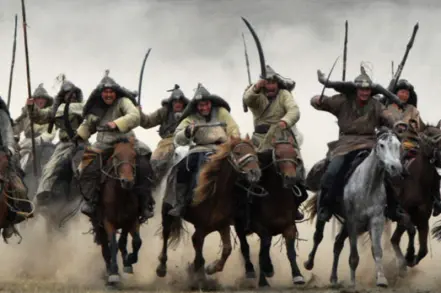In the vicinity of the village of Glinoe, Slobodzeya region, Pridnestrovian archaeologists discovered the burial place of a noble Mongol warrior.
His belonging to the highest military aristocracy is evidenced by a set of weapons and a horse burial arranged near the tomb, reports novostipmr.com
Employees of the research laboratory “Archaeology” of the Pridnestrovian State University made this discovery while studying the destroyed barrows. Excavations, in fact, rescue – they allow you to find and preserve ancient artifacts that contain unique historical information. This year, research was made possible thanks to a presidential grant under the program for supporting social and cultural projects.
Among the artifacts of the warrior’s tomb: iron arrowheads of various shapes, a dagger and a long saber, separate parts of a birch bark quiver have been preserved. The primary analysis of these objects and the elements of the burial rite (the shape of the pit, the orientation of the skeleton) made it possible to determine the time attribution of the burial: this is the end of the 13th century – the era of domination of the Golden Horde in the steppes of the Northern Black Sea region.
Judging by the size of the skeleton, the man during his lifetime was not tall – barely 1.6 meters. Interestingly, the saber found with him is 1.3 meters long. This is clearly visible in the photograph. The hilt is located at the shoulder bones of the buried, and the edge of the blade reaches the lower leg. The warrior wielded a saber almost as tall as his.
This speaks of the strength and dexterity of a person, which is confirmed by his broad bones. The shape of the skull and prominent cheekbones, in turn, speak of its Mongoloid origin.
The quiver set indicates that this man was a skilled archer. He knew how to handle arrows with different tips, differing in shape and weight. Among them are massive three-lobed and diamond-shaped.
When skillfully used at short range, they pierced armor and chain mail, making them very effective against heavily armed infantry or cavalry.
For seven centuries, corrosion has deformed metal objects, and now they are fragments of iron slag. For example, archaeologists assembled a saber literally piece by piece. And it takes at least another six months to restore the artifact.
Doctor of Historical Sciences Vitaly Sinika, who heads the expedition of the Research Laboratory “Archaeology”, suggested that the burial of the Mongol warrior may be a reflection of the internecine war in the Golden Horde between Khan Tokhta and the governor of the western territories, Beklarbek Nogay. At the end of the 13th century, Nogai ruled the lands between the Danube and Dnieper rivers and was so strong that he pursued an independent policy and minted his own coin. Even the emperor of Byzantium, Michael Palaiologos, intermarried with him, marrying his daughter Euphrosyne for Nogai.
The powerful beklyarbek (ruler over rulers) helped one of the descendants of Genghis Khan Tokhte win the struggle for power in the Golden Horde. But Tokhtu, who took the throne, was worried about the independence of his ally, which ultimately led to a military conflict. The battle between Nogay and Tokhta, according to Arab sources, took place in 1300 in the place of Kukanlyk. Historians localize this toponym in different ways: some believe that this is the Kuyalnik estuary, others believe that we are talking about Lake Kuchurgan. One way or another, but the battle ended in the defeat and death of Nogai.
It is possible that a Mongol warrior from the vicinity of Glinoye participated in this Kukanlyk battle, which took place somewhere between the Dniester and the Southern Bug. He could be seriously wounded and die during the retreat of the remnants of Nogai’s troops. So far, this is only a version, further research will either confirm or refute it. And the fact that archaeological excavations make it possible to discover new grains of the ancient history of Pridnestrovie is confirmed every season.
Source novostipmr.com









